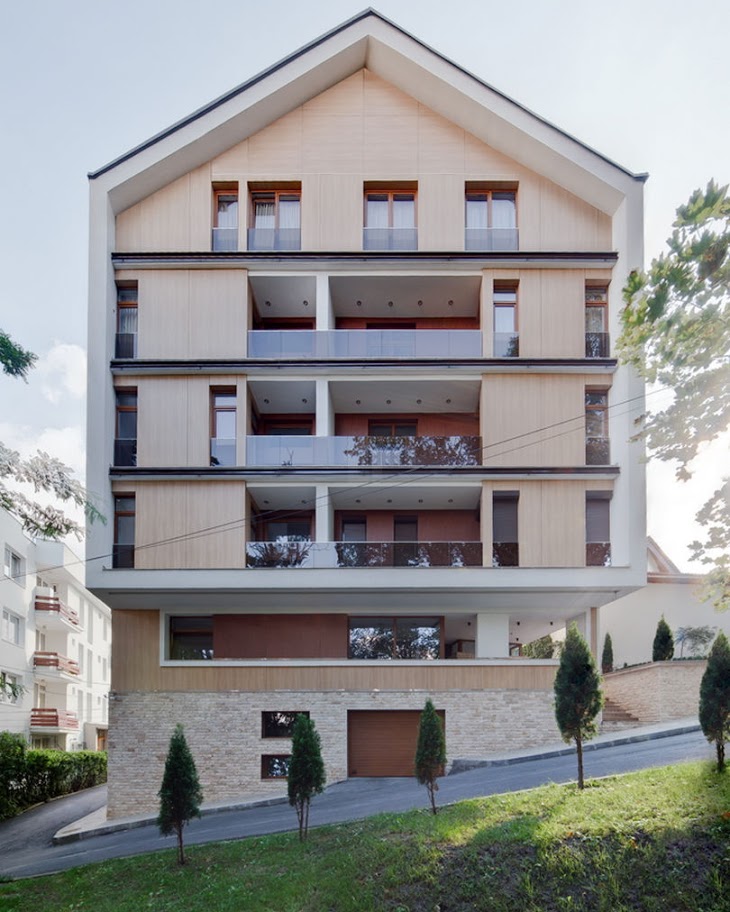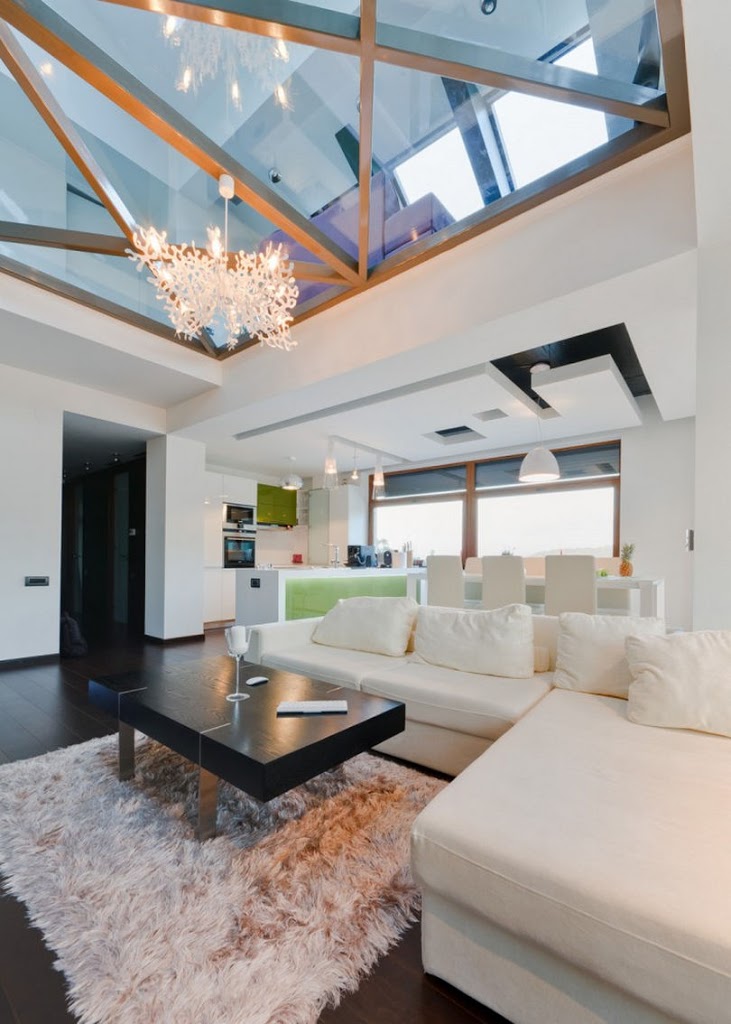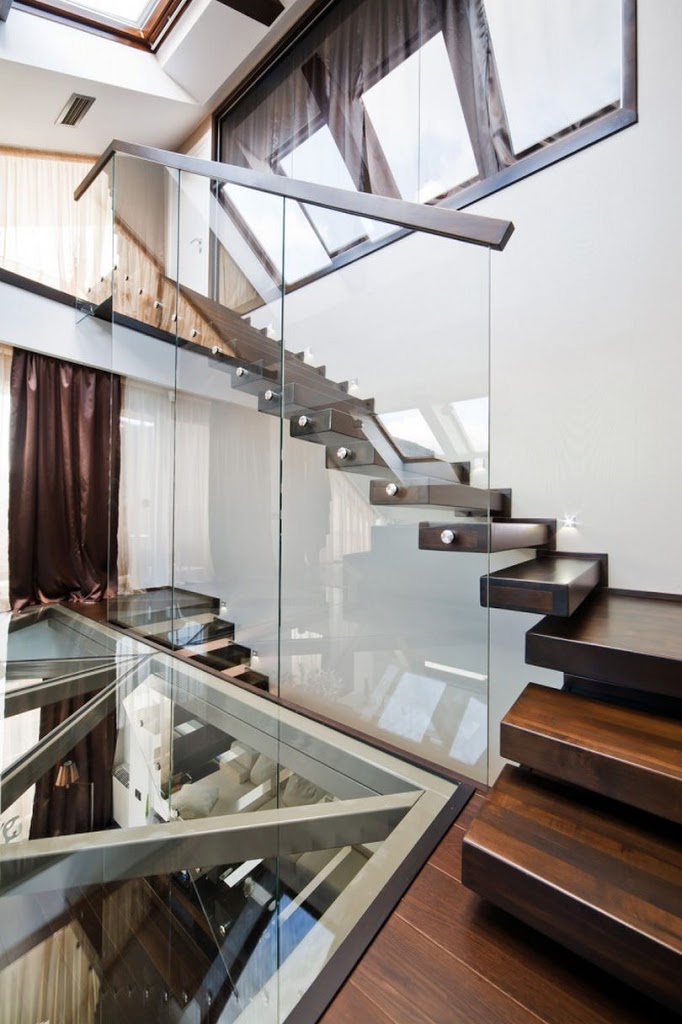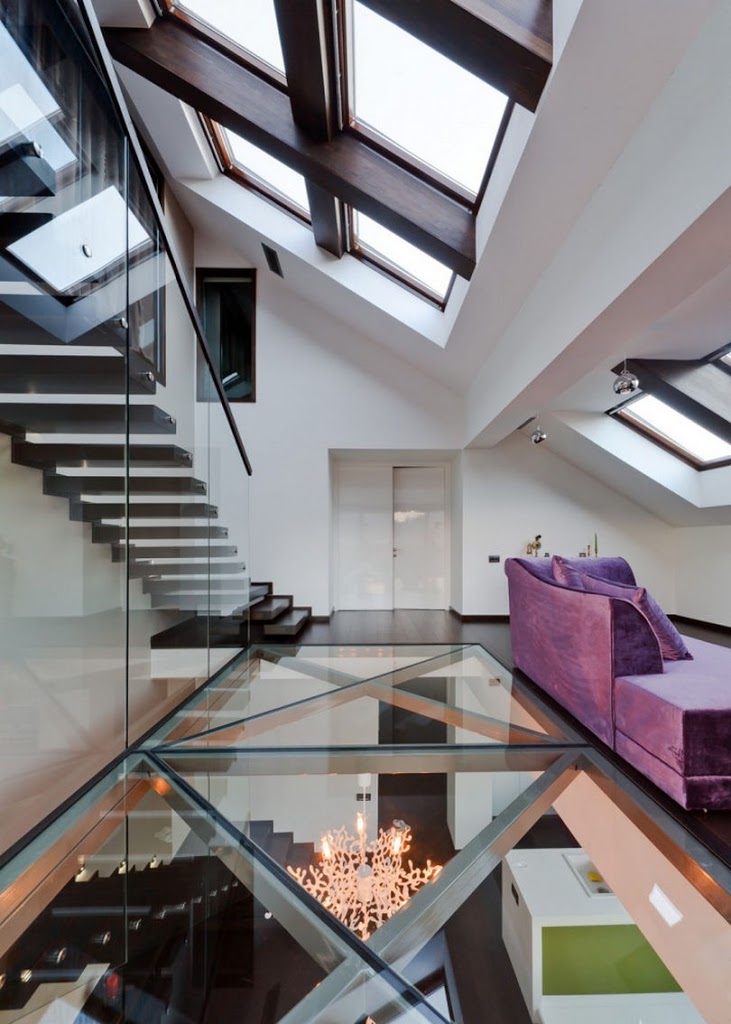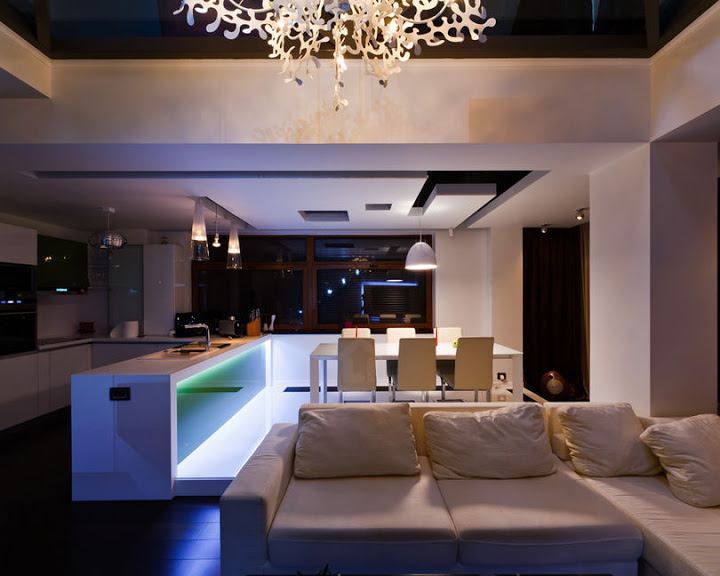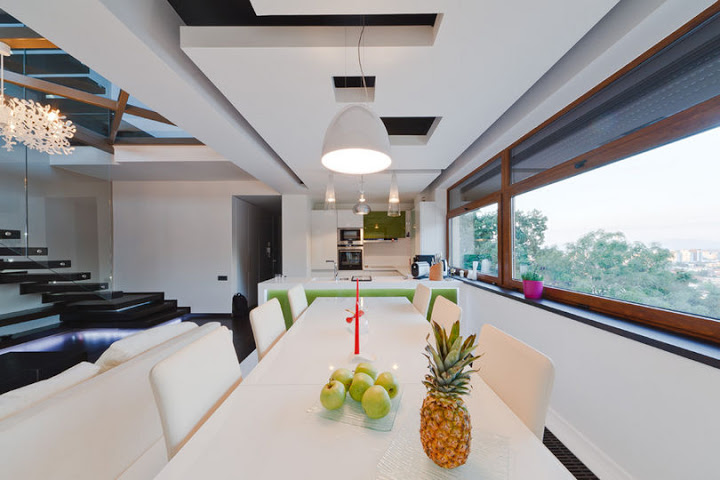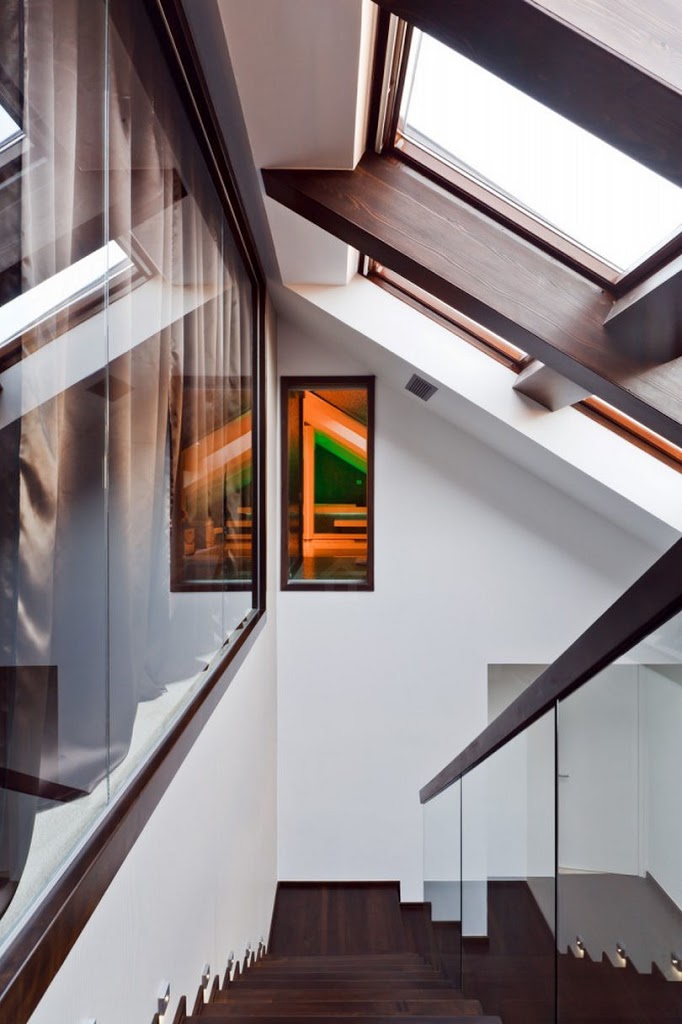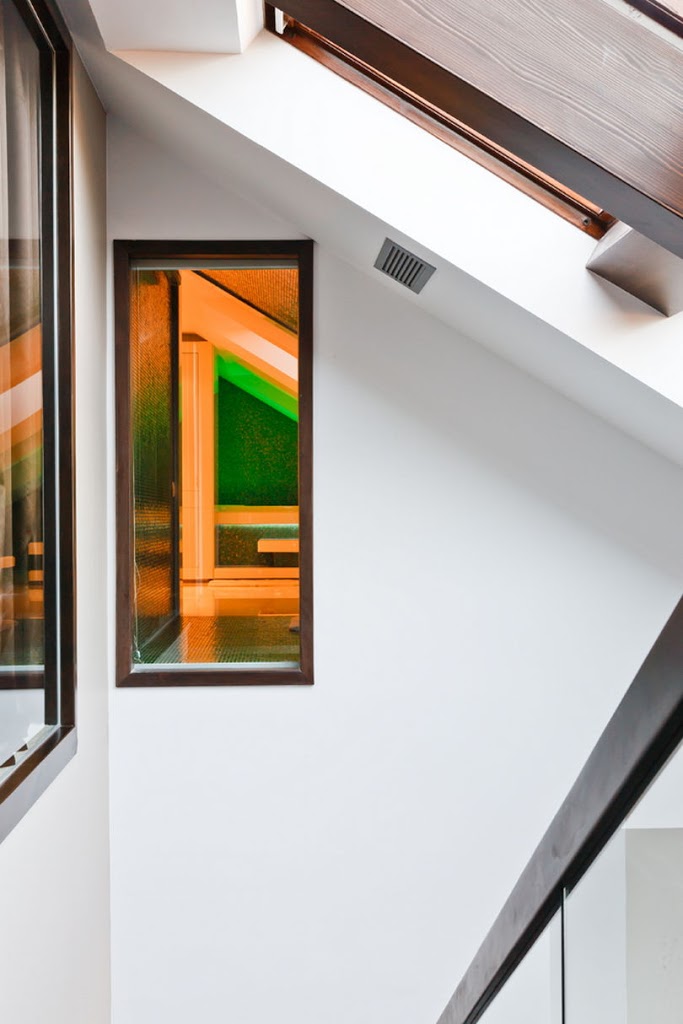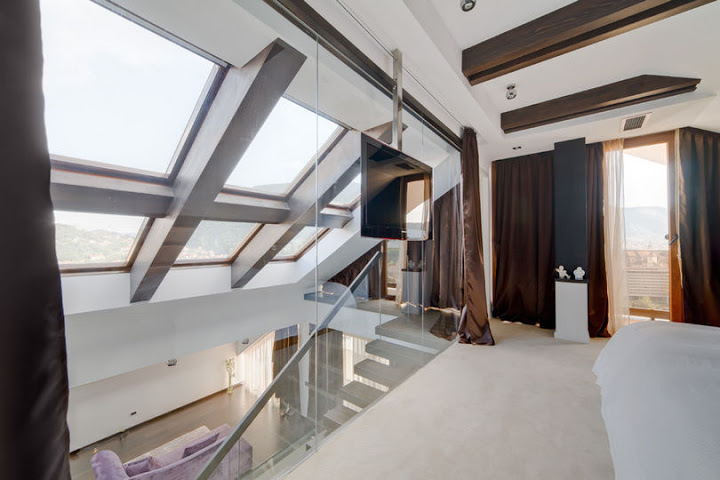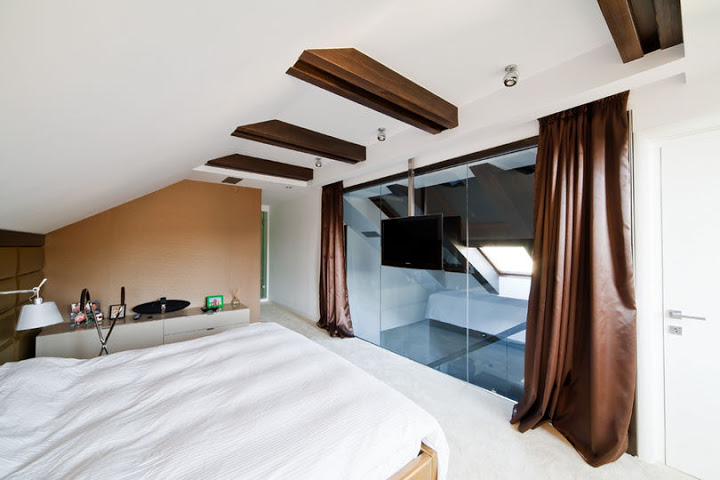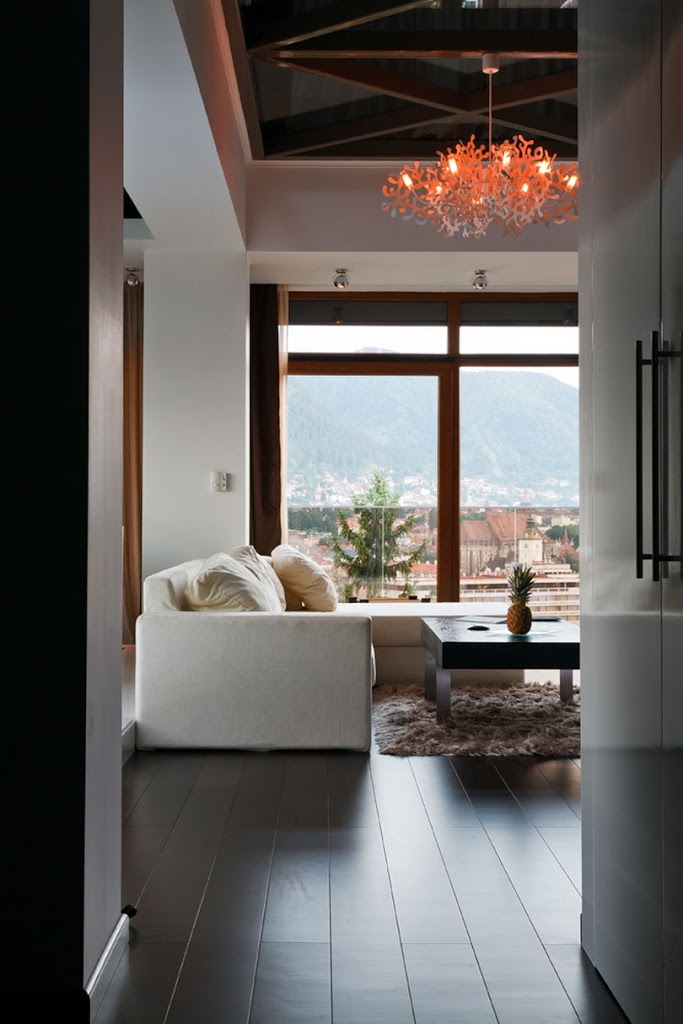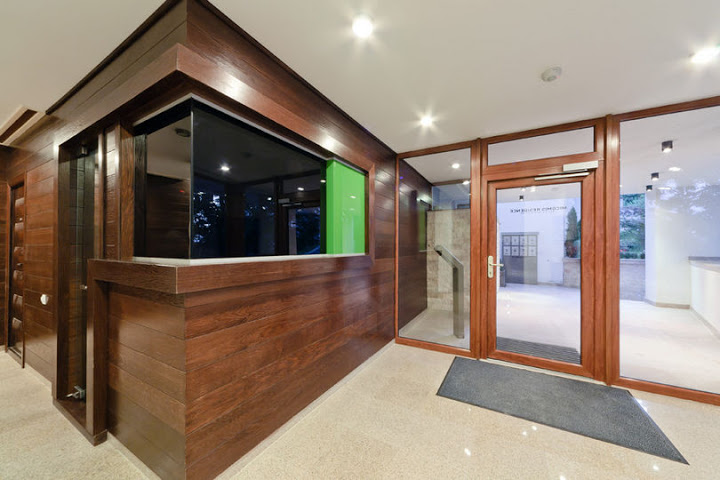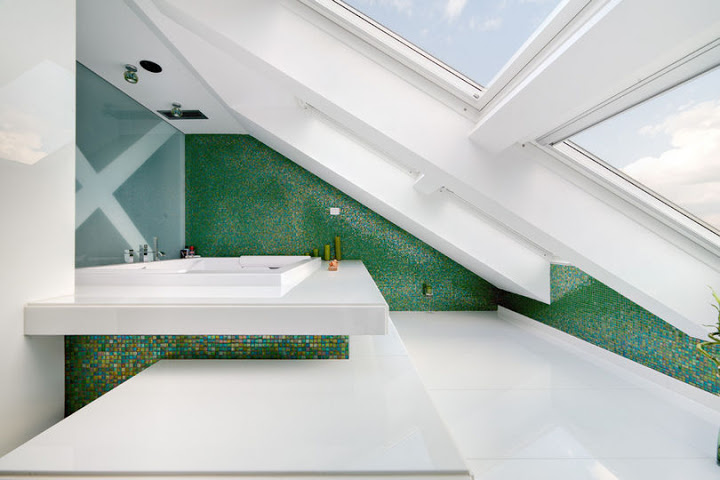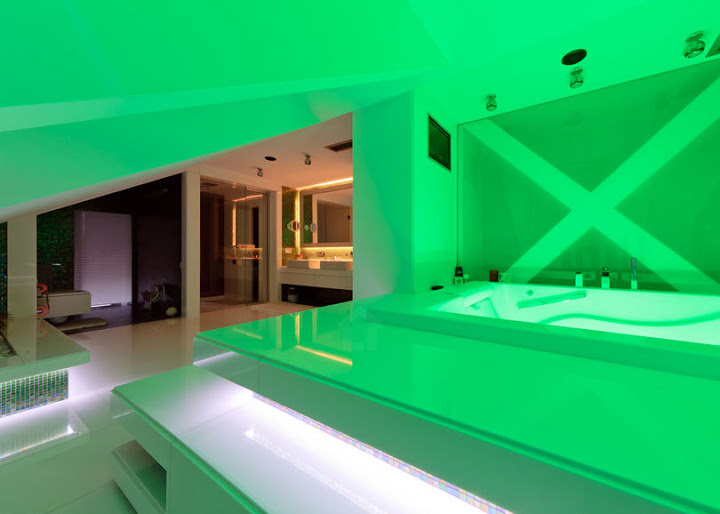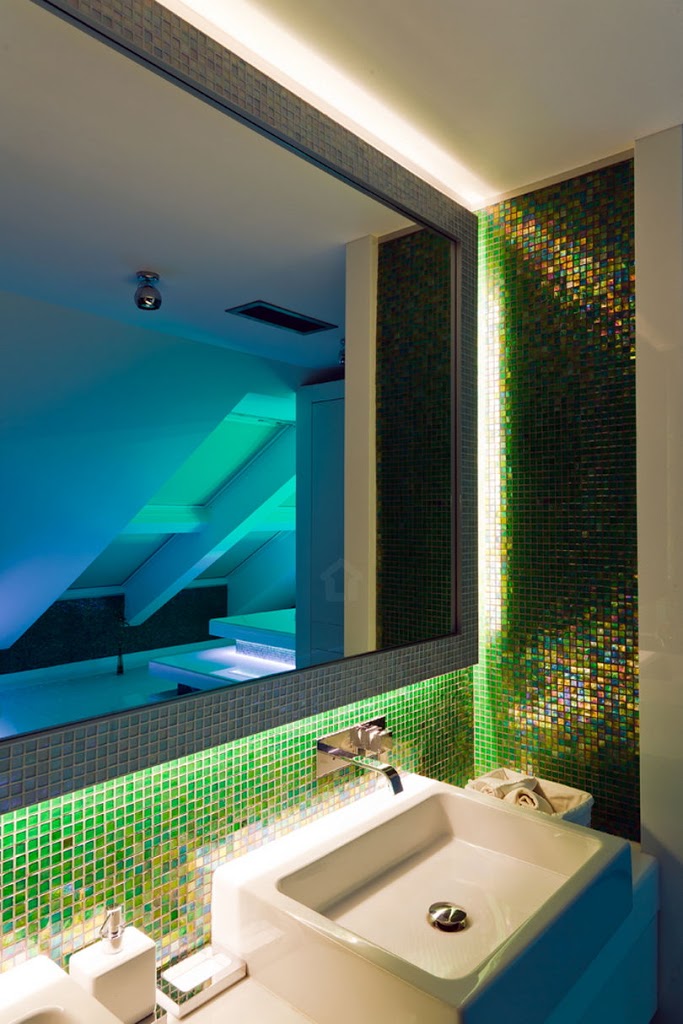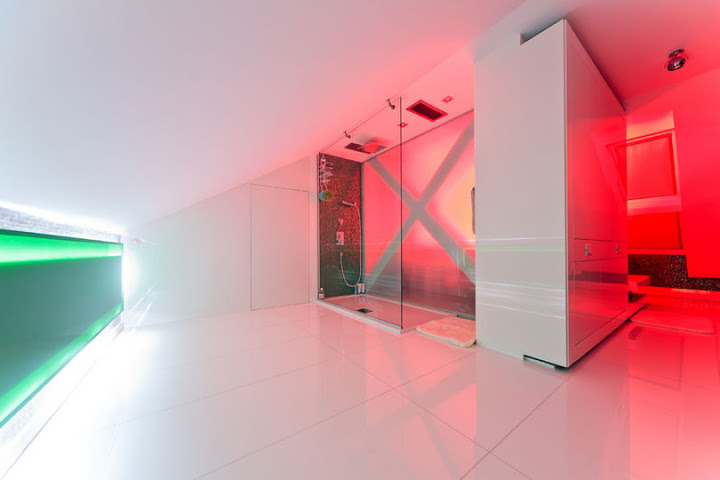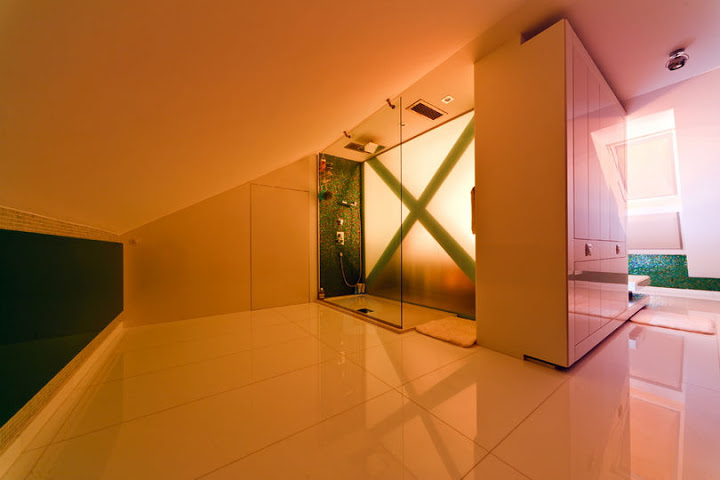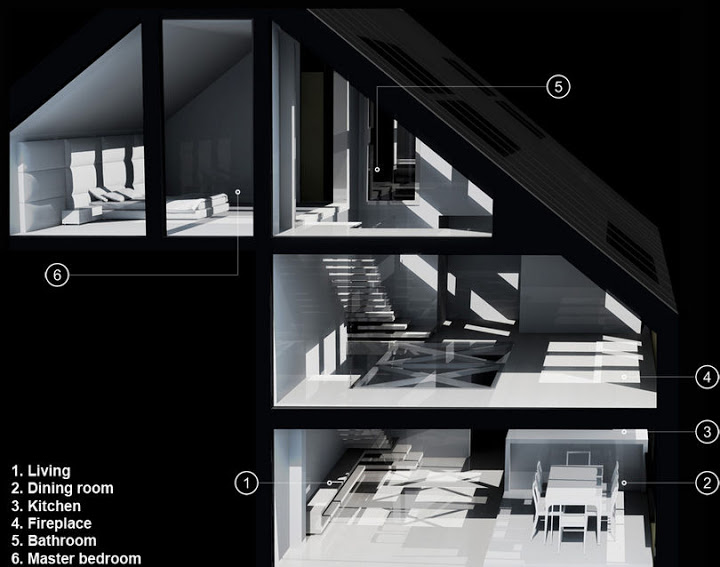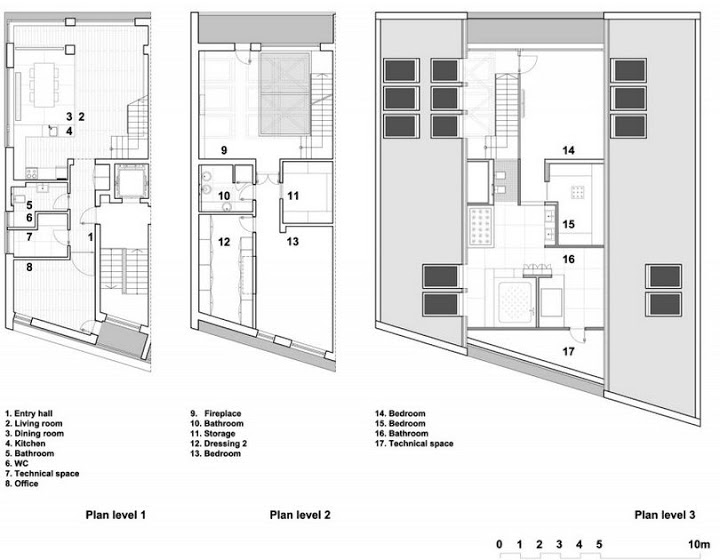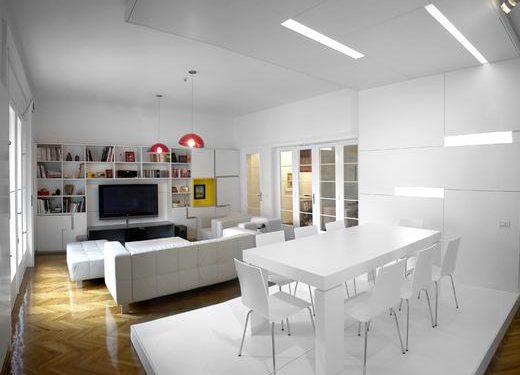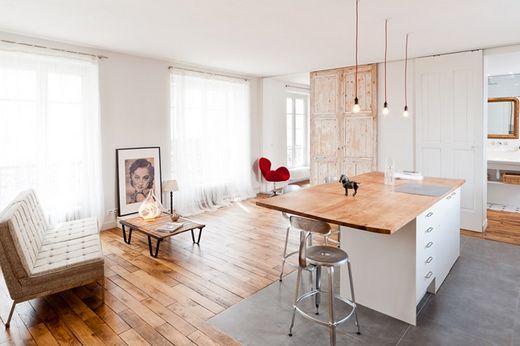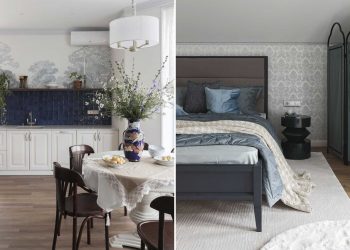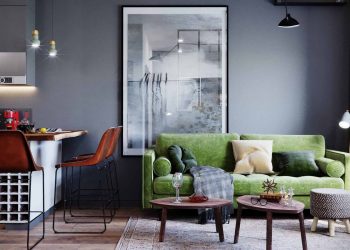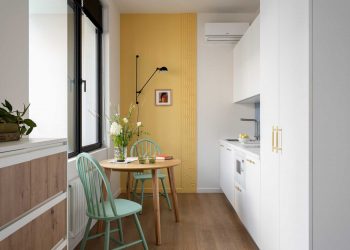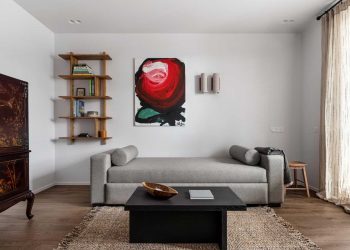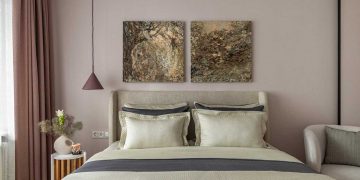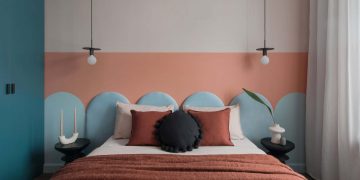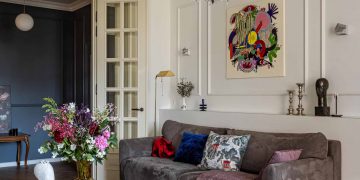Ion Popusoi és Bogdan Preda építészek tervezték az épületet Brassóban, a házban hat lakás és két loft lett kialakítva. A kompakt épület tervezésekor maximálisan figyelembe vették a helyszín értékét és a Brassó történelmi városközpontjára és a környező hegyekre nyíló panoráma nyújtotta lehetőségeket.
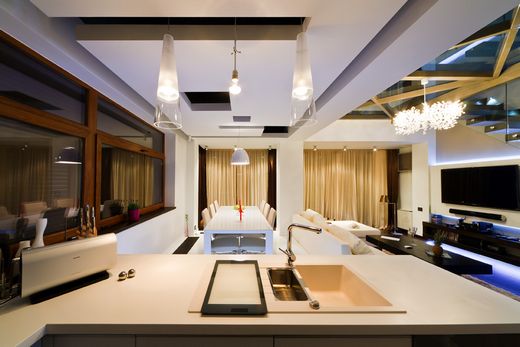
Ion Popusoi és Bogdan Preda építészek tervezték az épületet Brassóban, a házban hat lakás és két loft lett kialakítva. A kompakt épület tervezésekor maximálisan figyelembe vették a helyszín értékét és a Brassó történelmi városközpontjára és a környező hegyekre nyíló panoráma nyújtotta lehetőségeket.
Az épület letisztult, egyszerű formavilágát különböző anyagok és textúrák, színek gazdagítják. A padló szintjéről induló ablakok a térérzetet növelik, a tetőablakok pedig a lakás mélyéig vezetik be a fényt az üvegpadlókon keresztül. A szükséges minimum elvét követve a látványos lépcső szinte lebegni látszik, a szinte alig észrevehető üvegkorlátok nem engedik, hogy a szükségszerű szerkezet zavarja a belső terek harmóniáját. A funkcionális kialakítás, a transzparens belsőépítészeti elemek (lebegő lépcső, üvegpadló), fehér falak egyfajta sterilitást, nem-otthonos érzetet keltő összhatását a képek alapján sikeresen ellensúlyozzák a melegebb elemek mint a sok sötét fa, barna és bézs kiegészítők, színes elemek (színes LED világítás a fürdőszobában és hangulatvényként a nappaliban).
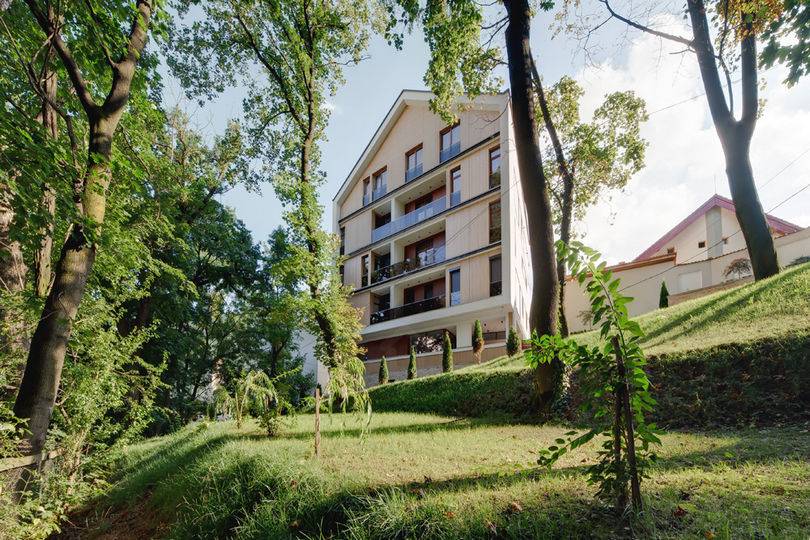
The building site is situated on Cetatuia Street, at the edge of the historical center of the town, with an amazing panoramic view over the mountains and historical center of the city. This context demanded that the positive aspects of the site and the landscape are emphasized and exploited, while the space is used to its maximum potential.
The building was designed as a residential housing including 6 apartments (2 per each level) and 2 lofts. This led to a compact building, very conscious of the value of the site and of the panoramic views it could offer. The clean, simple shape of the construction is enriched using the contrast and interaction between different materials with specific textures and colors.
Windows reach to the floor, which makes the room appear larger, flooded with light, while roof windows bring daylight deep down into the living room through the glass flooring. The glass wall on the last floor for the master’s bedroom opens a new direction to the living room and farther to the city through the roof windows. Without these glazed surfaces – horizontal and vertical – the house would have lost a very important spatial dimension and the relationship between the interior and the landscape. Strongly emphasized verticality of the living room walls is attenuated by the gallery of openings of various sizes and depths, connecting this room to something beyond the wall, either inside or outside the house. These are actually the interior decorations of the house. The stair was reduced to its minimum – the steps. Railing was almost dematerialized by transparent glass, thus non-essential elements that altered the clear perception of the space where eliminated as much as possible.
Fotók: Cosmin Dragomir



